iOS 12 vs. Android P: Comparing the New Features
Android P and iOS 12 are nearly here, and we compare the newest features coming to both platforms later this year.
Is it Apple copying Google now? Or Google copying Apple? There's bound to be some feature overlap between the two prevailing mobile operating systems, and we've seen the next installments of both in the past month: iOS 12 and Android P.
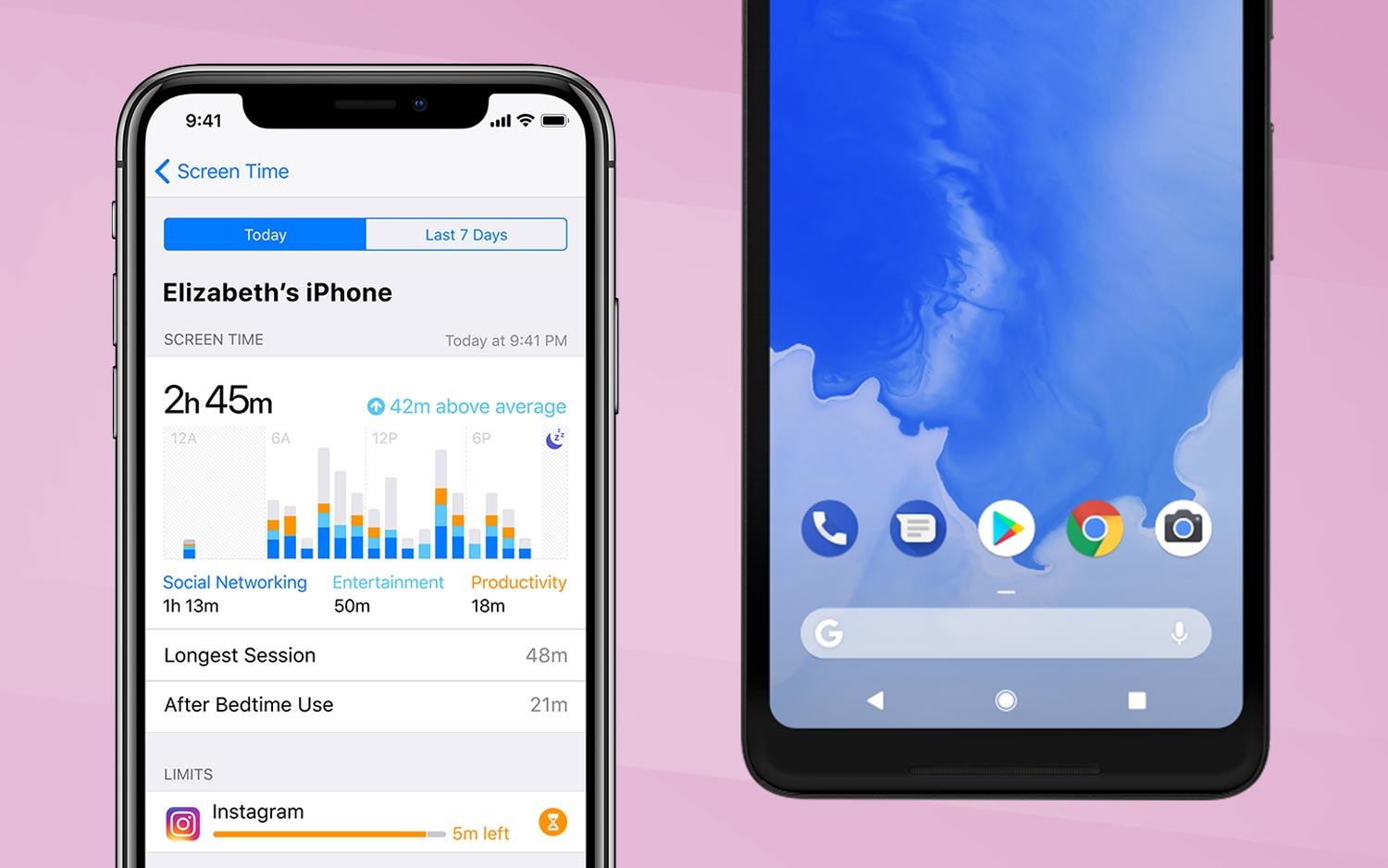
Apple and Google have identified similar goals to tackle with future versions of their respective platforms. Fighting digital addiction is one of them; so is making your phone more predictive and accommodating to your requests. And as the market matures and users hold on to their devices for longer, there's an ever-growing need to make sure new software runs almost as well on old hardware as it does on the latest silicon.
This comparison will walk you through each system's approach to these challenges. It's still very early days for both of these just-announced releases, so a lot is subject to change between now and late summer/early fall, when both iOS 12 and Android P are expected to launch. Once we get our hands on the final versions later this year, we'll explore both in more depth.
Siri, Google Assistant and Machine Learning
Machine learning will serve as the backbone for all our smart devices going forward, and that transformation starts with iOS 12 and Android P.
In Apple's case, iOS 12 brings two new services to Siri — Suggestions and Shortcuts — that work in tandem to make the assistant on iPhone and iPads more proactive.
MORE: Siri Is Catching Up to Alexa and Google Assistant in a Big Way
Sign up to get the BEST of Tom's Guide direct to your inbox.
Get instant access to breaking news, the hottest reviews, great deals and helpful tips.
During a live demo, Apple's Kim Beverit demonstrated how Siri pays attention to patterns and routines, providing suggestions based on what it notices. So, if you stop for coffee every morning before work, Siri will chime in with a notification that asks if you'd like to place an order before you embark on your commute.
If you find these suggestions helpful, you can chain them into Shortcuts: progressions of predetermined actions that you can fine-tune to have your iPhone carry out certain tasks when particular criteria are met. An example shared during the keynote was one for heading home, in which the user's phone plays a podcast and flips on the air conditioning at home.
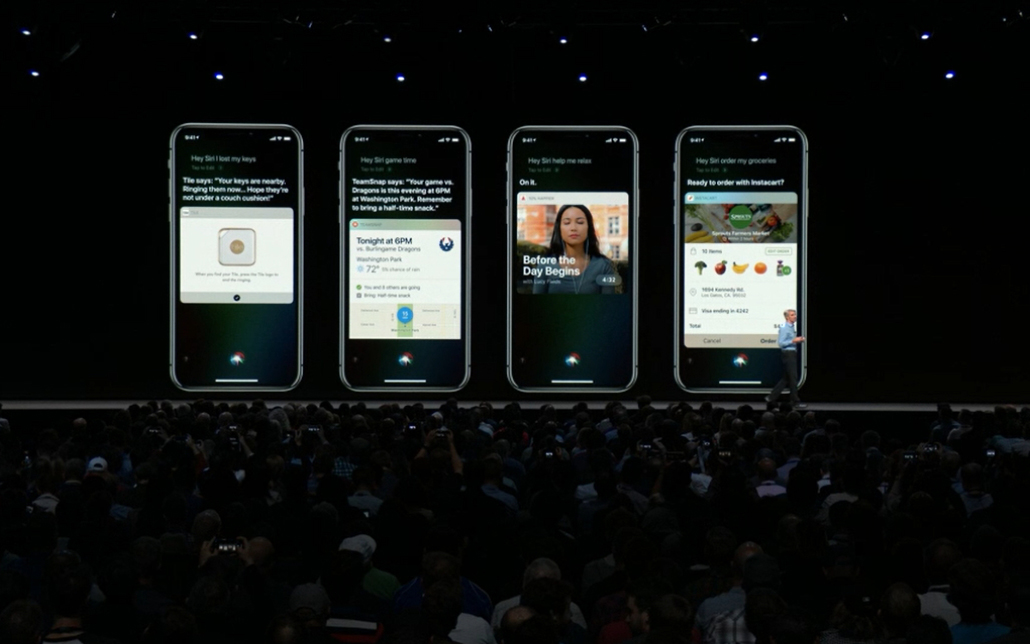
You can build your own shortcuts by adding and taking away steps, or you can download premade ones. In that way, Shortcuts function very similarly to Workflow, an automation app that Apple purchased a few years back. In fact, the interface is very familiar.
Siri's new predictive abilities pop up in other places around iOS 12, too. If you're running late for an appointment and tap on the system search bar, one suggestion will allow you to send a prewritten text to somebody on the calendar invite to let them know. Even Photos has gotten the machine learning treatment; it recognizes the faces of people in your pictures and asks if you'd like to share those pictures with the people recognized. If you do, the person on the other end will be asked if they'd like to share back their photos from the same event.
Android P has a form of search bar suggestions with Slices. These are essentially expanded search results that correspond to apps you have installed on your device. So if you type in Lyft or Uber in the Google search bar on your phone, you'll see a result in the list that automatically tells you the price of a ride to wherever your phone thinks you might be going — right there in search.
Google is also using machine learning to lengthen run time through Adaptive Battery and Adaptive Brightness. The former prioritizes resources for common tasks or apps you use frequently, while Adaptive Brightness pays attention to how you like to set the screen across different surroundings. That way, it can save you the step of messing with the slider when you venture outside or return indoors.
Digital Health
After years of criticism over building products that are addictive to users — particularly children — Apple and Google are finally responding. Both iOS 12 and Android P incorporate suites of services designed to encourage you to be mindful of the time you or your children spend on phones and tablets, as well as to disconnect every once in a while.
On iOS 12, you'll be able to view daily and weekly activity reports of your usage and impose App Limits to prevent yourself from spending too much time in front of a screen. When using App Limits, you'll be able to allot a maximum time for which an app can be used per day. If you exceed that time, your device's screen will turn white and you'll be nicely told to move on — though you can bypass this suggestion if you'd like.
Downtime is another feature that prevents certain apps (or the entirety of the device) from being used during specific hours of the day. This is pitched more toward parents imparting responsible usage habits to their kids. A parent can set their child's phone to enter Downtime at 9 p.m., for example, when everything outside of phone calls and white-listed apps will be blocked until morning.
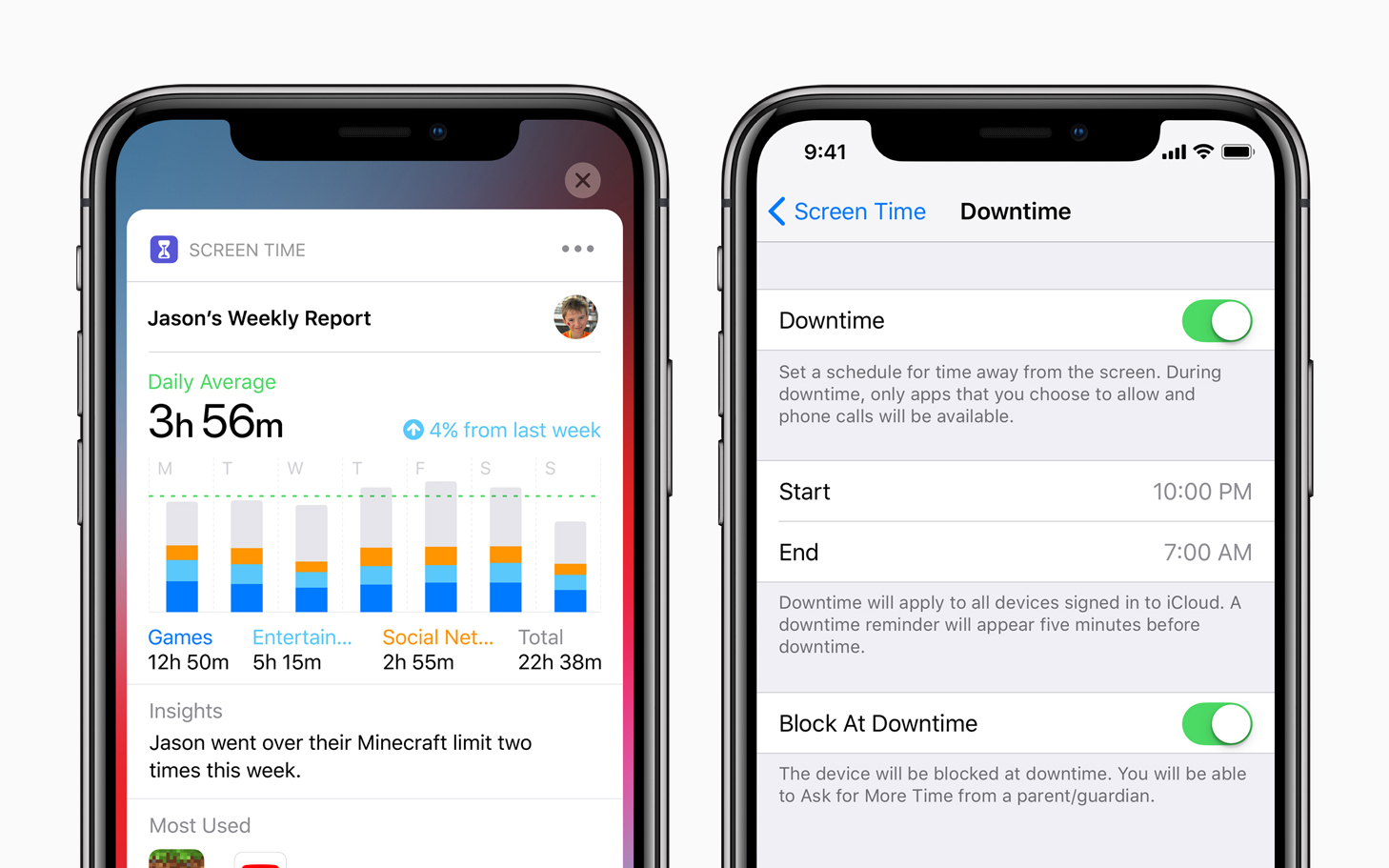
Google's approach with Android P is very similar; App Timer is functionally the same as Apple's App Limits, and Do Not Disturb will now block visual alerts as well as audio-based ones. Google has also added Wind Down to Android, which automatically switches on Night Light (a feature that tints the screen warmer to reduce eye strain) at predetermined hours. Apple already incorporated scheduling with Night Shift on iOS, so Wind Down will bring parity for Android users.
Notifications
The two operating systems have always handled notifications differently from one another. And although neither Apple nor Google is planning massive changes to notifications in 2018, both companies are aiming to give the user more control and more convenience in deciding what alerts they don't mind being bothered by and which they'd rather ignore.
For iOS 12, that means a quick way to easily tune notifications directly from the lock screen. Press into a notification from a particularly annoying app (Apple cheekily used Facebook in an example during the keynote), and you'll have the ability right there to direct the app to deliver notifications quietly, without lighting up your lock screen. Alternatively, you could turn it off altogether, without having to sift through menu after menu in Settings.
In fact, if Siri notices you're not interacting much with certain apps, it'll make those recommendations for you. And starting in iOS 12, notifications are now stacked by app. That means that successive iMessages will be bundled together, rather than listed in separate bubbles that flood Notification Center. You'll be able to dismiss entire batches, too.
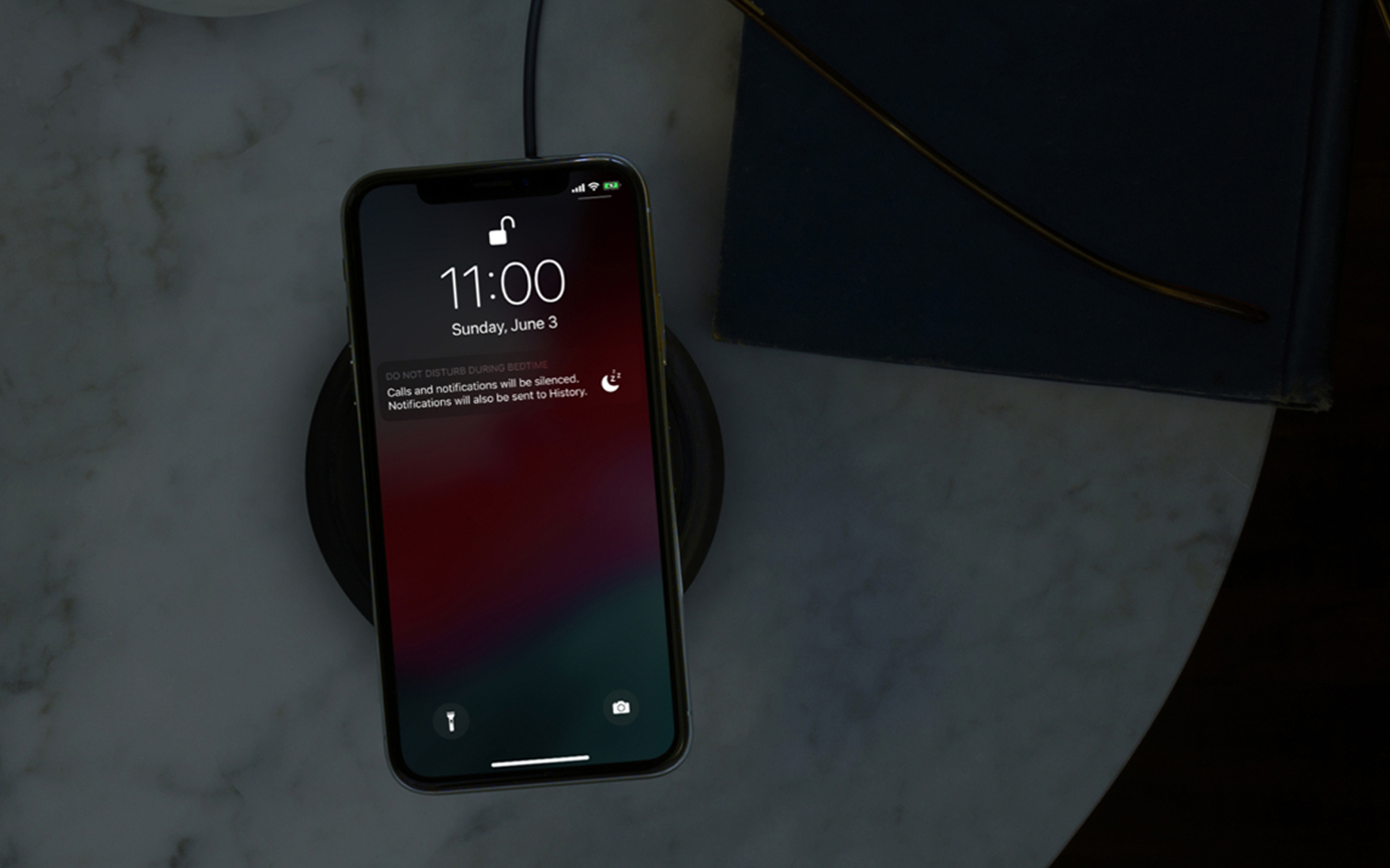
Do Not Disturb also gets an upgrade in iOS 12, with a new Bedtime feature that hides all notifications and turns the lock screen to a black background until you rise in the morning. You can also set Do Not Disturb on a timer now so that it automatically turns itself off after, say, an hour, or maybe once you've left a certain area.
Google has always been a bit ahead of Apple on notifications, and so the changes in Android P are more granular. There's now a Manage Notifications button that pops up underneath the notifications shade, which sends you to the Settings app so you can silence chatty apps. Google is also experimenting with richer alerts specifically for texting apps, surfacing larger previews for images, as well as threads and auto replies right there in the notification shade.
Performance and Updates
Apple and Google have almost every major feature covered in their respective operating systems — meaning there's very little you can accomplish in one that you can't do in the other. However, efficiency and performance, particularly for older devices with modest specs, remain primary areas of consideration for both companies.
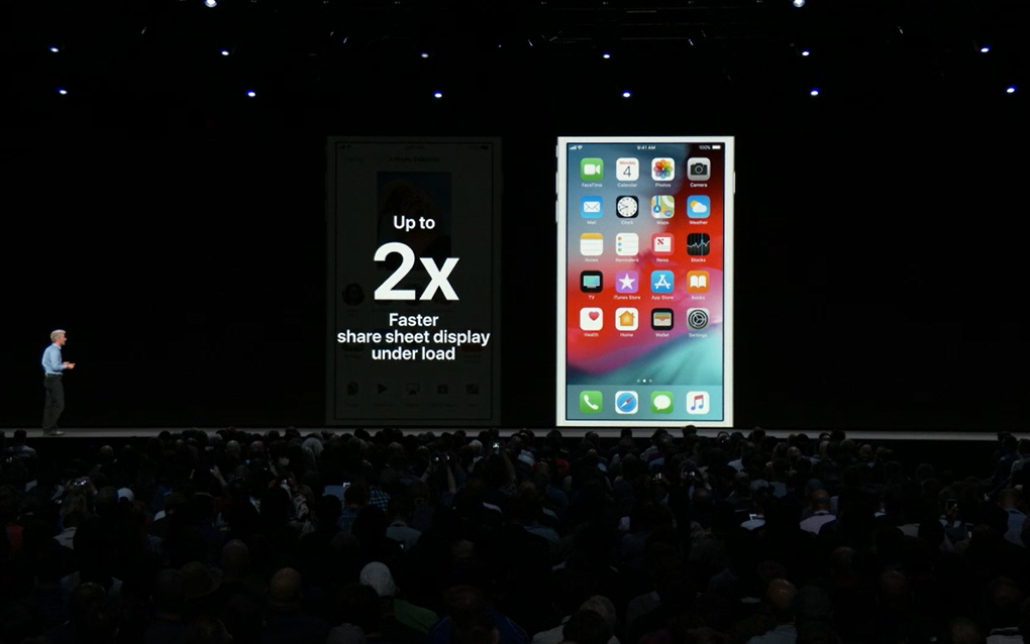
Apple is making a concerted effort to ensure that iOS 12 doesn't bog down older models, after previous releases were sharply criticized for essentially bricking legacy devices. On iPhone 6 Plus, for example, the company cites 70 percent faster camera launching from the lock screen, as well as apps that open twice as fast under heavy workload and a keyboard that appears 50 percent faster than on iOS 11.
Additionally, iOS 12 will be supported on more iPhone and iPad models than any iOS release in the platform's history, extending all the way back to 2013's iPhone 5S and iPad Air.
Google introduced an initiative when it launched Android Oreo called Project Treble that was designed to solve Android's historically dismal approach to updates. Treble better separates the bulk of Android from the customizations and UI tweaks that phone makers like to add. That means updates can be pushed more swiftly and frequently no matter who built your phone, without messing with device-specific features and graphics.
While we haven't seen Treble produce significant change yet for the majority of Android users, we did get a good hint when the Android P beta launched on no less than seven handsets in addition to Google's own Pixels. That's tremendously encouraging for the future of the platform.
Gesture Navigation
The iPhone X ushered in the era of gesture navigation: simple swipes to get around your phone that didn't take up space either on the body or screen like the home buttons of old. With iOS 12, Apple is bringing the popular new interface to iPad.
Users will now be able to return to home on their iPads by swiping up anywhere along the dock. Control Center will also be accessible from the top right corner. These features aren't making their way to the iPhone 8 or older handsets that lack the iPhone X's full-screen design, but iPad users will get to enjoy them.
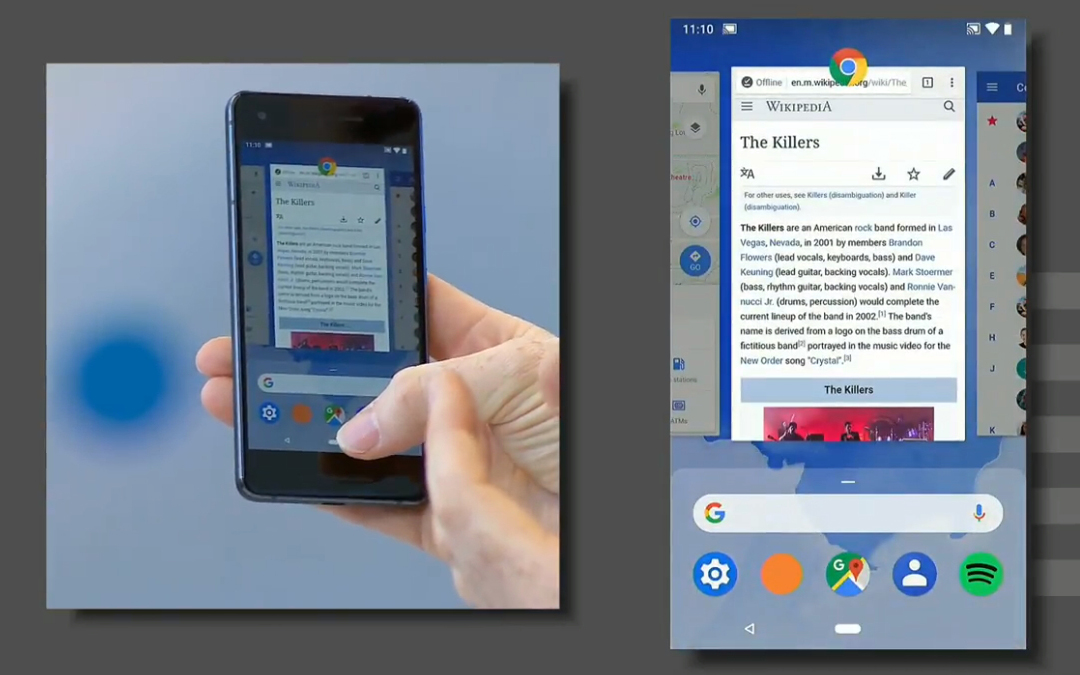
Google is also going all in on gestures with Android P. The operating system's new navigation scheme incorporates a thin, pill-shaped bar that acts as a home button. Just as before, you can hold it to invoke Google Assistant. However, a quick swipe up from the bottom of the screen now surfaces your recent apps, while a full swipe further to the top will bring up your entire app drawer, no matter if you're not on the home screen.
The new recent-apps page also incorporates app suggestions in a dock powered by Google Assistant and machine learning, while the bar itself can be slid from left to right to scrub through previous apps. The back button does remain, though it now appears only when you actually have something to go back to — meaning you'll never see it on the home screen.
If Android's new gestures aren't your cup of tea, you'll be delighted to hear that Google is keeping the traditional three-button system in Android P. In the public beta thus far, it's been the default method of navigation after installing the new operating system.
Outlook
It'll be interesting to see how the new features in iOS 12 and Android P evolve throughout the beta-development process and which company's solutions end up being more popular.
Power users are sure to get the most out of Siri Shortcuts, though inflating Siri's presence in iOS could turn away some iPhone owners if the reliance on suggestions gets out of hand. By comparison, Android looks to serve up these recommendations a little more discreetly, though that could diminish visibility and thus adoption.
With Apple and Google rolling out their digital well-being initiatives concurrently, it's not terribly surprising that so many of their features overlap. And although the experience of navigating notifications remains fundamentally different between iOS and Android, both companies have evidently heard users' calls for more control over the apps and services that keep their devices up at night.
Ultimately, many of these features will surely be tweaked between now and release, so we'll keep you posted on the latest changes as they're made.
Adam Ismail is a staff writer at Jalopnik and previously worked on Tom's Guide covering smartphones, car tech and gaming. His love for all things mobile began with the original Motorola Droid; since then he’s owned a variety of Android and iOS-powered handsets, refusing to stay loyal to one platform. His work has also appeared on Digital Trends and GTPlanet. When he’s not fiddling with the latest devices, he’s at an indie pop show, recording a podcast or playing Sega Dreamcast.
-
plendzyk Actually Blackberry ushered in gestures with the BB10 OS, but everyone hated it then. Why don't people hate it now?Reply
